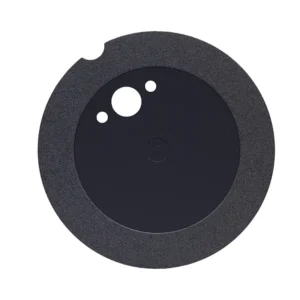By Dianna Brodine, managing editor, Plastics Decorating
In 1901, the first suction vacuum cleaner was introduced to an intrigued audience in London, England, by Hubert Cecil Booth, an engineer and designer of suspension bridges. The oversized contraption was pulled by a horse to the street where the home or commercial building was located, and long hoses were fed through the windows. When the gas-powered engine was started, the vacuum cleaner pulled the collected dirt and dust into a glass chamber – drawing an appreciative audience on the street and marketing the service to new customers. 1 The robot vacuum cleaner was revealed 95 years later in 1996, but the concept wasn’t commercially successful until eight MIT roboticists formed iRobot to launch the first Roomba in 2002. 2
![]() Twenty years later, the iRobot i3, i4 and i5 models are manufactured in DongGuang, Guangdong, China, by IMR Technology Co., Ltd. (IMR). The company, whose slogan is “Better life on board through smart surface decoration,” specializes in providing intelligent surface decoration solutions through the use of in-mold decorating technology. Working with several Fortune 500 companies, IMR has branches in seven countries around the world.
Twenty years later, the iRobot i3, i4 and i5 models are manufactured in DongGuang, Guangdong, China, by IMR Technology Co., Ltd. (IMR). The company, whose slogan is “Better life on board through smart surface decoration,” specializes in providing intelligent surface decoration solutions through the use of in-mold decorating technology. Working with several Fortune 500 companies, IMR has branches in seven countries around the world.
Robot vacuums are known for their sleek look, often produced in shades of gray and black to emphasize their electronics roots. For the iRobot Roomba i3/i4/i5 robotic vacuum cleaner, IMR produced an in-mold decorated cover with a decorative matte look that simulated a tactile “fabric” appearance.
The cover film was designed in Adobe Illustrator, with a total of 12 layers. Four of the layers created the gravure-printed textile pattern, and the rest created the functional properties of the film for scratch resistance and injection process robustness. PET (polyester) was used as the base carrier film for the film construction on the gravure machine, and this PET film also was the means of conveyance for the label in the molding process.
Gravure printing illustrated the woven pattern, and the injection tooling was textured to match the pattern. In this way, the faceplate is very close to the appearance and feel of real cloth. In fact, the feeling of the robot vacuum cover is nearly indistinguishable from an actual textile, but in a way that was more cost effective and technically feasible. Also, this method created a surface that was much more durable and robust than any textile finish could provide.
A Sumitomo injection molding machine was paired with film-feeding equipment to apply the label decoration during the molding process. The tooling and film-feeding equipment were manufactured by IMR Technologies using in-house resources.
The greatest challenge during production was to match the printed pattern on the label film to the textile surface texture in the tooling. This required very precise printing technology that then was registered to the injection molding process and to the injection tool surface. The result is a cover with matte print and mold surface features that are perfectly matched to create texture in the surface with gradient and printed effects that were not possible using traditional techniques.
The use of in-mold decorating for this iRobot application eliminated the need for traditional painting or chrome plating. Due to the large production series of these devices, the VOC reductions were significant when compared to traditional decoration techniques.
A quick turnaround was required for this consumer application, and IMR Technology was able to design and print the foils, build the molds and build a production line for full panel assembly in about four months. Since project inception, IMR has produced more than three million parts for this application, proving in-mold decorating as the perfect match for a large-volume consumer product with requirements for a high-end appearance, superior performance characteristics and interesting tactile properties.

In addition to an iF Design Award and a REDDOT award for design excellence, the decorated cover received the 2022 IMDA Awards Competition Judges’ Choice Award for Distinguished Achievement in the Use of Design and Molding to Create an Aesthetic, Tactile Experience. The judges commented on the excellent integration of part design with in-mold decoration, saying, “The aesthetics of the part, the quality of the print and the matte finish of the material really give this part a fabric look and feel. The judges applaud IMR Technology for excellent execution, from part and graphic design through
molding.”


